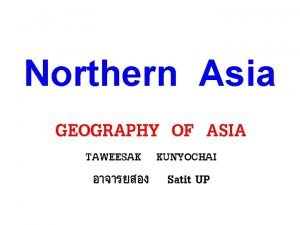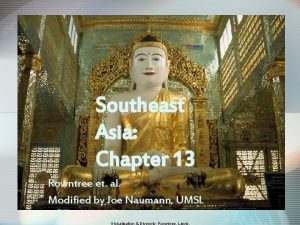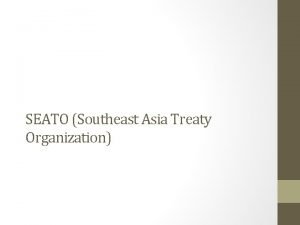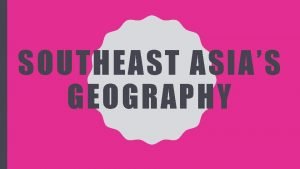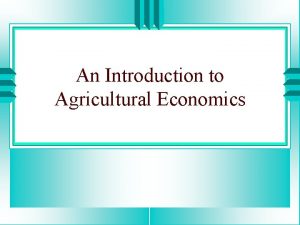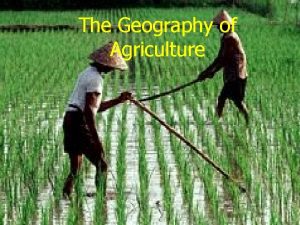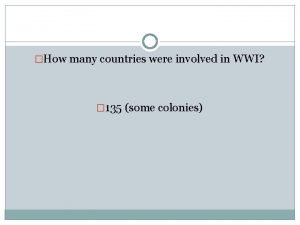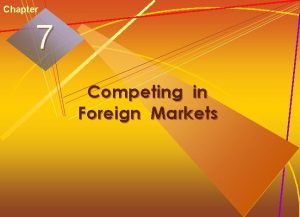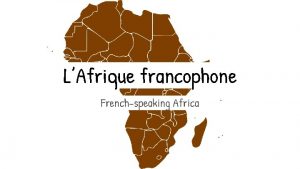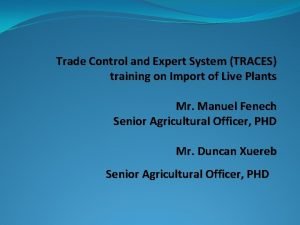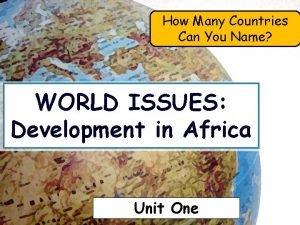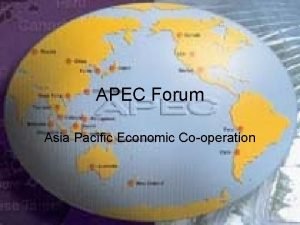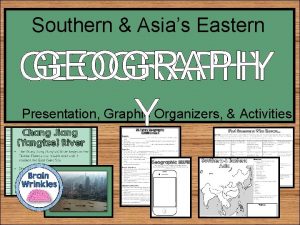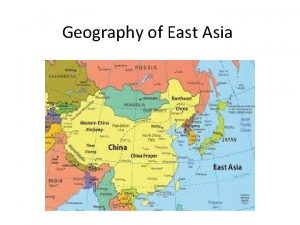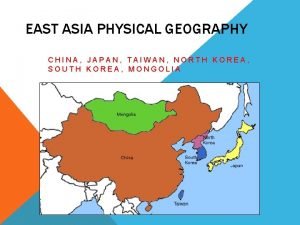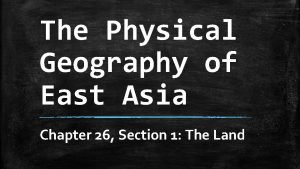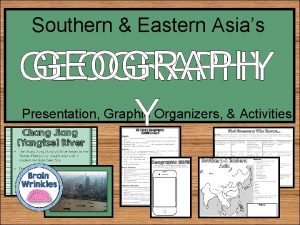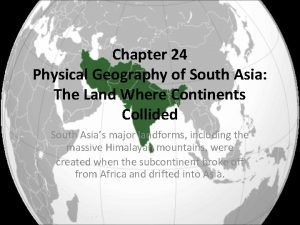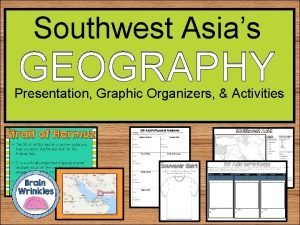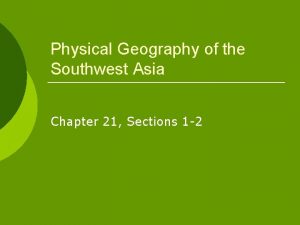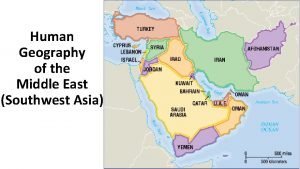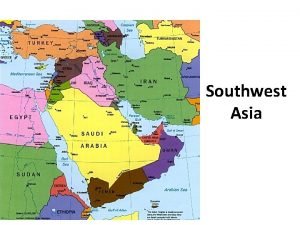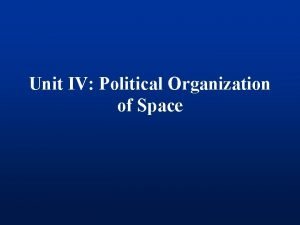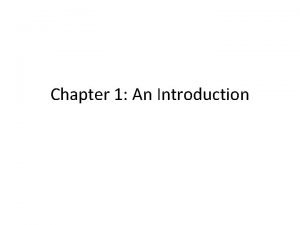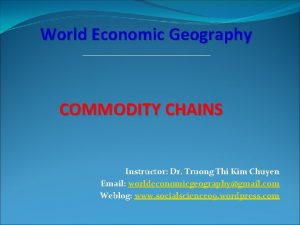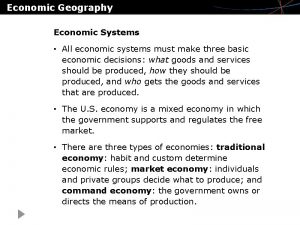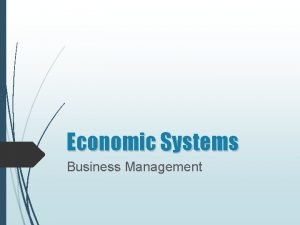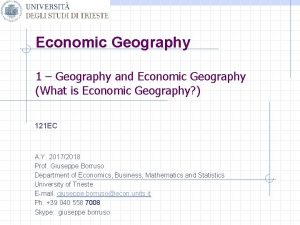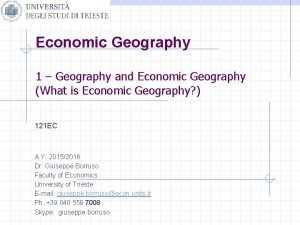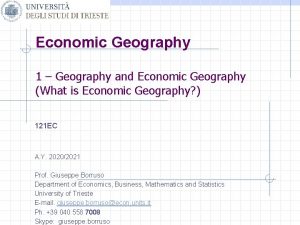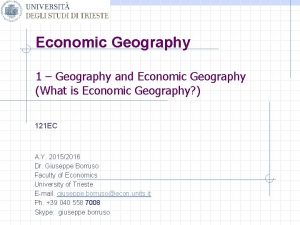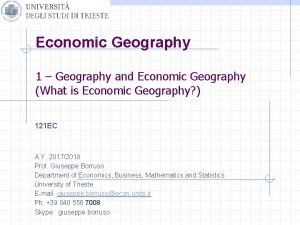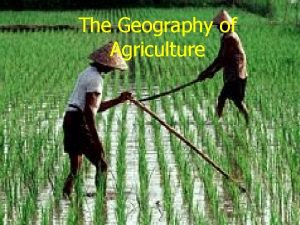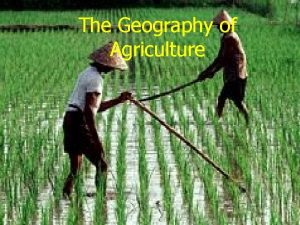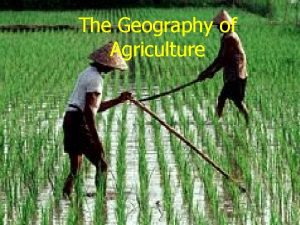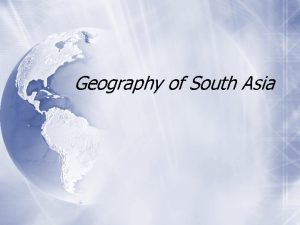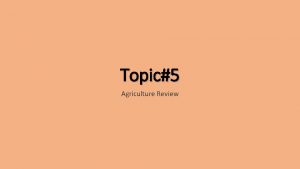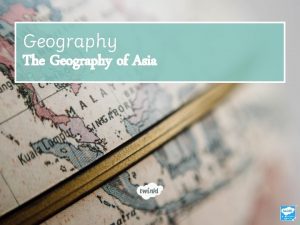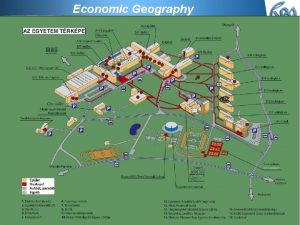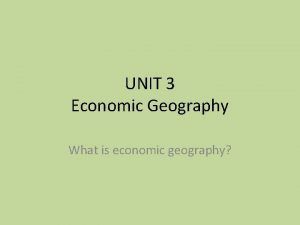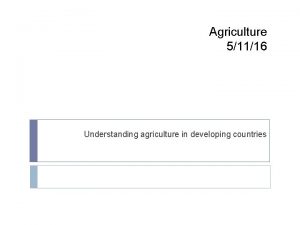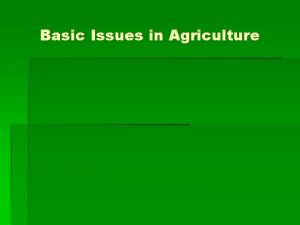Asia Economic Geography Agriculture in Asia Many countries


















































- Slides: 50

Asia Economic Geography

Agriculture in Asia Many countries in Asia have arable land: Arable land is land that is good for farming. v Tropical crops are grown in countries with tropical climate zones: Rice is the most important food crop in the tropical region of Asia. v

Tropical/Equatorial Zones

Humid Subtropical Zones

Humid Continental Climate

Mountains v The most important mountain range in Asia is the Himalaya Mountains. v The Himalayas: ü separate India from China. ü block clouds from entering Western China that are formed by monsoons ü isolate Tibet, which is claimed by China, and make transportation difficult.

The Himalayas, con’t MT. EVEREST World’s Highest Peak at 29, 029 feet (higher than 21 Empire State buildings) MT. EVEREST Peak located between countries of Nepal & Tibet, China

Mountains, con’t v Among other large mountain ranges found in Asia include the Hindu-Kush mountain range, which is west of the Himalayas and north of India.

Mountains, con’t v The world’s second highest peak is also found in south Asian-located mountain range, but not in the Himalayas. Instead, mountain peak K 2 is found in the Karakoram mountain range. The mountain range spans across Pakistan, India and China.

Mountains in India v The Western Ghats and Eastern Ghats are located near the Deccan Plateau of south central India. These two mountain ranges block moist winds and keep rain from the reaching the Deccan Plateau region, making it very arid.

Mountains v Mount Fuji is the tallest mountain in Japan at 12, 388 ft. The mountain is located on the island of Honshu and it is considered sacred by Shintos.

Plateaus and Uplands Most of Western China is on a plateau called the Plateau of Tibet. Farther north is the Mongolian Plateau. v The Korean Peninsula and the Japanese Islands are mountainous. v

Plateaus and Uplands

Rivers and Bodies of Water The most important rivers in South Asia are: A. The Indus B. The Ganges C. The Brahmaputra v The Ganges and Brahmaputra start in the Himalayas and flow into the Bay of Bengal. Both rivers flow through Bangladesh and as a result, this country often floods during the monsoon season. v


The Ganges While both the Indus and Ganges Rivers are very important for India’s commerce and transportation, the Ganges is one of the most polluted rivers in the world due, in part, to human use. v One city along the Ganges, Varanasi, is considered sacred by Hindus and the focal point of pilgrimages and, therefore, human use. v

The Rivers of China v China has three major rivers that begin in the Himalayas and flow into the East China Sea or Yellow Sea. River Chinese Name Yellow River (“River of Sorrow” due to floods) Huang He Yangtze River (longest; important to commerce) Chang West River Jiang Xi Jiang

Grand Canal of China

Rivers in Southeast Asia v The longest river in Southeast Asia is the Mekong River. This river starts in the Himalayas and flows through China, Laos, Cambodia, and Vietnam before emptying into the South China Sea.

Mekong River

The Gobi Desert The largest desert in this area is the Gobi Desert. v Although South Asia gets rain from the monsoons but the Himalaya Mountains block the rain from entering Western China. Most of Western China and Mongolia are in a rain shadow. v

Gobi Desert

Islands v A group of islands is called an archipelago. There are many archipelagoes, and you have mapped four of them. What are they?

Crops v ü ü ü Besides rice, the other common tropical crops grown in Asia include tea sugar cane coffee rubber, and cocoa.

Crops v More than 50% of the world’d tea production comes from the continent of Asia: üIndia produces 27. 4% üChina produces 24. 6%, For a combined total production of 52% of the world’s tea by these two countries, alone.

World Coffee Production

Methods of Farming In the mountainous regions of Asia people practice agricultural terracing, while in the tropical regions people often use the slash and burn method to farm which is often identified with subsistence farming. v In fact, although there are some large farm operations in Asia, subsistence farming is the norm in much of rural Asia. v

Tea Plantation

Rice Terraces

The Green Revolution v The Green Revolution was a period of time from the 1940 s to the 1960 s when new strains of rice and other crops were introduced to developing parts of the world. These new crops produced more food per square hectare and allowed food production to keep pace with population growth.

Developed or Developing? Although China is industrialized and India has many factories and a growing tech industry, both are still considered to be developing nations. v In fact, most countries in Asia are developing, meaning they still largely rely on agriculture for their economic base. v

Developed v The following countries are developed Japan, Taiwan, Singapore and South Korea. Of these four, Japan is the oldest industrialized nation in Asia.

Economic Systems v A. B. C. There are three types of economic systems: Free Market Economy Mixed Economy Command Economy (Centrally Planned) The only country in Asia with a strict command economy is North Korea. Laos, Vietnam, and China are all transitioning towards free market economies.

Japan v v Japan has one of the largest fishing fleets in the world. Although Japan is known for its automobile factories, in general the economy is moving towards the service sector. Japan is the economic leader in the region. Japan is heavily dependent on imported raw resources. It must import about 50% of its food and most of its fuel.

China v v v Until 30 years ago, China was communist and had a centrally planned or command economy. However, in the last thirty years China has transitioned towards a free market economy. China, along with many countries in Asia, now participate in the global market. Due to rapid industrialization, China now faces several environmental problems such as soil erosion, air pollution, and the loss of arable land.

Population China is the most populated country in the world and India is the second most populated country. v China has instituted a one child policy in order to limit population growth. India has no policy. v

Population Parts of Asia are very densely populated and parts of it are sparsely populated. v Densely populated areas include Eastern China, India, Japan, and most of Southeast Asia. v Sparsely populated areas are Western China, Mongolia, and areas in the Himalaya Mountains. v

Economic Unions v The largest economic union in this region is ASEAN, The Association of Southeast Asian Nations. The members of ASEAN are: A. B. C. D. E. Brunei Indonesia Vietnam Philippines Malaysia F. Cambodia G. Laos H. Thailand I. Singapore J. Myanmar

ASEAN

ASEAN

Cities Site = The physical location of a city. v Situation = The economic, political, cultural, or topographic factors that make a city important. v

Cities City Site Singapore Island Hong Kong Island Situation On a trade route, The Strait of Malacca Xian, China Grew up on a trade route, The Silk Road Varanasi, India Focal point for Religious pilgrimage

Silk Road

World Tea Production

The Green Revolution v v v IR 8 is a variety of rice that was genetically engineered by the International Rice Research Institute and introduced to India. Regular Rice Yield = 1/2 ton per hectare IR 8 Rice Yield = 5 tons per hectare with no fertilizer and 10 tons with fertilizer.

The Rivers of China v The Yangtze and Yellow Rivers flow through an area that is flat in elevation called the North China Plain. This area has intensive farming and the two rivers are connected by The Grand Canal. The type of dirt found here is called loess. It is a rich soil that is yellow in color and normally deposited by the wind.

Developed Taiwan, Singapore, and South Korea are considered newly industrialized countries because they built most of their factories in the last fifty years and the economy of these countries no longer relies on agriculture. v Japan is highly industrialized but it has been industrialized since the late 19 th century. v

Population Pyramids

Population Pyramids

Cities Asia has some of the largest cities in the world. v In Asia there is an extreme contrast between urban areas and rural areas. People in rural areas are still living a traditional lifestyle and practicing subsistence farming. v Many people are moving to cities to look for jobs. v
 Mainland asia
Mainland asia Taweesak kunyochai
Taweesak kunyochai Countries in southeast asia
Countries in southeast asia Countries in southeast asia
Countries in southeast asia Seato dissolved
Seato dissolved Geography of asia
Geography of asia Agriculture economic importance
Agriculture economic importance Brain gain definition ap human geography
Brain gain definition ap human geography Intensive farming ap human geography
Intensive farming ap human geography What is monocropping ap human geography
What is monocropping ap human geography Israel palestine
Israel palestine How many countries were involved in wwi
How many countries were involved in wwi How many countries in uk
How many countries in uk Operating in the markets of many different countries
Operating in the markets of many different countries French speaking african countries
French speaking african countries Traces trade control and expert system
Traces trade control and expert system Well done children
Well done children How many countries in the world
How many countries in the world Apec forum
Apec forum Economic growth vs economic development
Economic growth vs economic development Economic growth vs economic development
Economic growth vs economic development Lesson 2 our economic choices
Lesson 2 our economic choices Label the following
Label the following Geography of asia
Geography of asia Taiwan physical geography
Taiwan physical geography Reteaching activity 24 cultural geography of south asia
Reteaching activity 24 cultural geography of south asia Chapter 27 section 1 landforms and resources
Chapter 27 section 1 landforms and resources Chapter 22 human geography of southwest asia
Chapter 22 human geography of southwest asia Chapter 15 lesson 1 physical geography of north africa
Chapter 15 lesson 1 physical geography of north africa Physical geography of east asia
Physical geography of east asia Sw asia geography cloze notes 1
Sw asia geography cloze notes 1 Se asia geography cloze notes 1
Se asia geography cloze notes 1 South asia physical geography
South asia physical geography South west asia
South west asia North africa and southwest asia physical geography
North africa and southwest asia physical geography Map of southwest asia
Map of southwest asia Human geography of the middle east
Human geography of the middle east Peninsulas and waterways in southwest asia
Peninsulas and waterways in southwest asia Chapter 25 human geography of south asia
Chapter 25 human geography of south asia Nation state
Nation state Economic geography
Economic geography Economic geography
Economic geography Human and economic geography
Human and economic geography Types of economic geography
Types of economic geography Economic systems examples
Economic systems examples How many economic systems are there
How many economic systems are there Frq ap human geography format
Frq ap human geography format 5 themes of geography ap human geography
5 themes of geography ap human geography Ap human geography political geography test
Ap human geography political geography test Many sellers many buyers
Many sellers many buyers Er diagram in dbms
Er diagram in dbms

